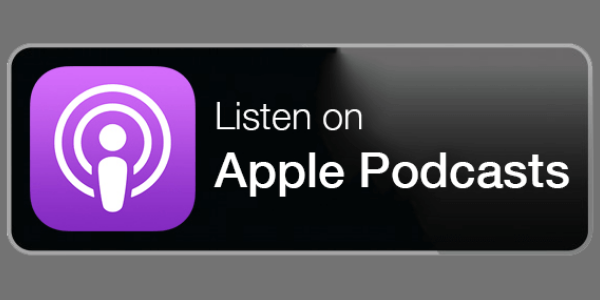Episode 22: How to Revolutionize Your New Product Development Process with Sustainable Product Innovation
Click the links below to listen to the full episode
Sustainable Product Innovation (SPI) is the key to driving new product development teams toward developing more sustainable products. In this episode, Tad and Julianna discuss an overview of the new product development process that most companies go through, explain how SPI works, the steps companies need to take to integrate SPI into their new product development process, and examples of companies that have had success with SPI.
what is the new product development process that most companies go through?
“Yes. As you know, all of us use products every day. We have our cell phones and our laptops, and we're getting new shoes and clothing, and even the pen you write with. What's interesting is most companies don't just magically create these products. There's a whole structured process they go through to basically do what we call new product development or product design. There's different terms for it. Most companies have a marketing and sales department, and what they're doing is they're listening to what they call the voice of customer. They're hearing, what does the customer want? What do we think we can sell? What can we do to provide a good or a service to people that we know they'll buy and we can make a profit on.
What will happen is that a team that's hearing the voice of customer or doing market research will try to understand what's going to be the next phone; the next features of the phone, the next running shoe. What will be the cool components of what they can sell and what they want to market. They'll be listening to all that. Then they'll go to a management team and they'll go through, what's called a stage gate process. So in the stage gate process, they're going to say, ‘all right, we hear about this need, and we have this great idea for either the next generation of our product, or a brand new product.’ And a lot of times the first phase is called ideation.
They'll go through usually a bunch of checklists that they have. They will go through an initial analysis to understand ‘can we actually make this thing? What materials will we need? Who would be the market?’ That team comes together and basically sells it to management on why they need to do something with their product. Either redesign, a next generation, or brand-new design. After the management team is convinced, they can move forward. Usually in a new product development team, it's marketing and the management team, but then you're going to have research and development, engineering, and you might have procurement or supply chain too.
So it's very structured. For most companies, it could take 1 year to 1.5 years to get through the process. In the world of electronics and phones, it's probably much faster because you’re going to meet the demand of what people really want. But the bottom line is, all the decisions made through that process are pretty much set in stone by the time you get to say stage four. Then they're going to roll the product out. So this is where it's important to start thinking, ‘what can we do differently to make the product more sustainable?’ Traditionally, most companies don't think about that at all in their new product development process.”
How does sustainable product innovation work?
“So, what we have done is we created these really cool tools or scorecards that are going to help the new product development teams include everybody: marketing, R&D, engineering, logistics, procurement, and supply chain. It gets them to start to think about this early on. We want them thinking about it in stage one/ gate one/ideation where we integrated a new term, we call voice of green. So, it's not just voice of customer, but it's also voice of green. We know the customer wants this, but we also have a lot of people out in the world who want healthier, greener, and more energy efficient products. So those are the kind of things that we also are training these teams to be listening for in their analysis.
As part of that, there's a checklist. We call it our sustainable product scorecard, and the company will go through that. The beauty of the scorecard is that the team doesn’t have to be experts in sustainability. Because the majority of people on the planet care and are interested in sustainability, but they don't know all the lingo and language that we talk about every day. The scorecard actually helps guide the team to be thinking about these things as they go through the process. Ideally, this is where Life Cycle Assessment (LCA) comes in. If you are a company that's run an LCA, you're going to have to know a lot about your product, processes, and operations. So, you'll know where the impacts in the raw materials are, and where the impacts in the manufacturing process are.
We can use the scorecard to think about the supply chain. If we're supplying raw materials from another country and they have to ship it really far away, we're going to have to know what the impact of that is. Or if it's being shipped by air versus rail, what's the difference? All of those things are going to be really important. That can then inform decisions as you're going through the new product development process and using sustainable product innovation with LCA as a basis. On the scorecard we always make sure to focus on cost because most new product development teams are tasked with figuring out how to make a product for less money.
Then we go down to things like looking at raw materials, are there different raw materials you can use? Or can you integrate recycled content? If you have done an LCA, what are the life cycle impacts that you should be considering? And what changes can you make? This is where circularity might come in. I always tell new product development teams ‘let's think about the end of life.’ When this product can no longer be used, what's going to happen to it? That's a great time to be thinking about circularity, because then you can say, ‘we know that typically our product at the end of life or end of use goes to a landfill. What if we designed it a little differently that we can number one, make it repairable, or we could extend the life to make it much more durable to last longer?’
Those are the kind of things we want the new product development teams thinking about. The life cycle aspects of that are really important because then you'll know what the limiting factor is. These are the kind of things that the sustainable product innovation scorecard will do and bring to light by thinking about this early on. So by the time you get to the end of that process, you've already factored in energy efficiency, better products, and better materials designed for disassembly or designed for reuse or repair. So it's awesome.”
what are the steps of integrating sustainable product innovation into the new product development process?
“What has to happen is most companies are going to have a really well defined new product development or stage gate process. Typically most of the companies are going to have spreadsheets or some checklists. What we have found is a lot of companies might have environmental health and safety checklists that they go through. These checklists make sure that no environmental health or safety issues could come up from this new product, or the redesign, or next generation product. So what we'll do is typically look at what they've already got, we'll work with them and build upon that.
Then we would take a look at what are the goals of the company, usually from a sustainability perspective. If they have commitments to reduce the carbon footprint of their products, or if they have commitments to reduce the amount of water or energy used in their manufacturing plants, we will factor those things into making the sustainable product innovation scorecard. Every company's different, but the basics of the scorecard can be the same. The structure of the scorecard is made up of categories and a scoring system. And usually, we create an output. So there'll be some type of a graphic. It might be a radar graph or a spider graph showing how they're going against the baseline, or the first product or something similar.
So really what we're doing is if they've done LCA, we're going to look at all that. Then we'll work with the team to put together the base or, what we call the beta version of their sustainable product innovation scorecard. Then usually there's a training that goes on where we bring the whole team together or elements of the team together. We walk through the scorecard with the team, and get input and validation from them. The beauty of that is, by working with the entire new product development team, everybody can provide insights, thoughts, and their diverse knowledge into this. Then we refine it from there, and we usually will run through a couple pilots with them where they're going to test it and see how it works.
What happens then is, being that it's a stage gate process, it becomes another step in the process. Usually we have them do the scorecard very early on, and then the scorecard gets carried through each stage in each gate. That way they can measure how they're doing in each phase. If a company has 5 to 10 categories such as water savings, energy savings, reduced embodied carbon, reduced carbon footprint, safer chemicals, cost reductions etc., we're happy if a company can achieve some type of improvement in two or three of the categories. We never expect them to improve all of them, right? So it's really just a guide to get people thinking. The beauty is, if you do all this in the beginning, you're going to get a product at the end that is going to be much better for the company, much better for the environment, and much better for all of us that use the product. You will come out of this with a product that really reduces impacts over the lifetime and life cycle and hopefully is on it’s way to going circular. So it's a great thing. And again, it's very important to have a lot of collaboration and involvement. That's really what sustainability is about: getting people to put their heads together to make a change.”





